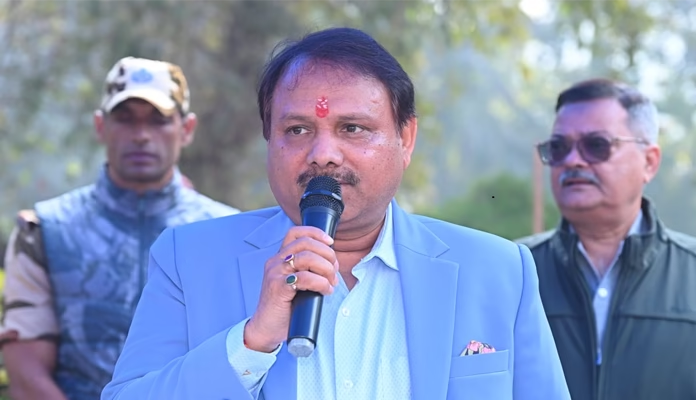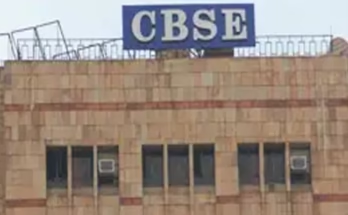 Ajay Kumar I Lucknow
Ajay Kumar I Lucknow
This time, the political landscape of Delhi’s Assembly elections is being laid out in a unique manner. With every election in the capital, new political equations emerge, and the recurring question remains: which caste or community will hold the key to power? In Delhi’s politics, caste and religious equations are extremely crucial, and understanding these dynamics is essential for any party aiming for power. While the Aam Aadmi Party is working hard to consolidate various communities to strengthen its position, both the BJP and Congress are striving to reclaim their lost ground. In this context, the importance of caste equations has only grown stronger and more pronounced.
In Delhi, the key factors determining the direction of electoral results are caste, religion, and regional equations. The capital has 70 Assembly seats, with diverse electoral equations across them. Looking at the results of previous elections, it is clear that the decisive role in securing power is played primarily by the votes of the Purvanchali, Punjabi, Jat, Vaishya, Brahmin, and Dalit communities. The caste equations in Delhi’s electoral field are so strong that every party formulates its strategy based on these factors. This time too, these equations are likely to determine the direction of power.
Apart from caste equations, religious equations also play a significant role in Delhi’s politics. Around 81% of Delhi’s population is Hindu, while the Muslim vote bank is about 12%. Additionally, there are smaller communities like Sikhs, Christians, and Jains in Delhi. The Purvanchali community contributes significantly to the caste structure in Delhi, constituting approximately 25% of the electorate. This community plays a decisive role in about 17 to 18 Assembly seats in Delhi. Constituencies like Kirari, Burari, Uttam Nagar, Sangam Vihar, Badli, and Gokalpuri see a significant impact of the Purvanchali vote. This community includes people from various castes, who have migrated from different regions to Delhi. A large section of the Purvanchali voters is currently aligned with the Aam Aadmi Party, though the BJP is also trying to attract this vote bank.
The importance of the Purvanchali community has grown even more this time, as it is contesting the elections with full strength. Especially in areas like Uttam Nagar, Burari, and Matiyala, where the Purvanchali voters make up more than 40% of the population, their votes could significantly influence the results. Both the Aam Aadmi Party and the BJP are formulating strategies to attract this community’s vote. The impact of the Purvanchali community in Delhi’s electoral environment is expected to be even greater this time.
Apart from this, the Punjabi community also plays a key role in Delhi. The Punjabi vote bank has always been significant in Delhi’s politics. Around 30% of Delhi’s population belongs to the Punjabi community, which includes 10% Punjabi Khatris and 5% Sikh voters. The impact of the Punjabi vote is seen in many constituencies, particularly in areas like Vikas Puri, Rajouri Garden, Hari Nagar, Tilak Nagar, Janakpuri, Moti Nagar, Greater Kailash, Jangpura, Kalkaji, and Rohini. The BJP has traditionally had a strong hold on the Punjabi vote bank, but both Congress and the Aam Aadmi Party are now making efforts to tap into this segment.
There was a time in Delhi’s electoral history when the Punjabi vote was a stronghold of the BJP, due to leaders like Madan Lal Khurana, Vijay Kumar Malhotra, and Kedar Nath Sahani. Even today, the BJP aims to regain power with the support of this vote bank, and to that end, it has entrusted the leadership to Virender Sachdeva, who is closely connected with the Punjabi community. Meanwhile, the Aam Aadmi Party has given a ticket to Atish, a candidate with strong ties to the Punjabi community. A fierce competition for Punjabi votes is expected this time.
In the outer areas of Delhi, the Jat community plays an important role. Jats make up about 8% of Delhi’s population, and they hold significant sway in the outer Delhi constituencies. Of the 364 villages in Delhi, around 225 are Jat-majority, and their electoral impact is especially notable in the outer Delhi Assembly seats. The Jat vote has traditionally supported the BJP, largely due to the influence of late Sahib Singh Verma, once considered the face of the BJP for the Jat community. His son, Pravesh Singh Verma, currently a Member of Parliament from Delhi, is seen as the party’s Jat face. The Jat community’s support for the BJP is likely to remain strong this time too, especially in the outer Delhi constituencies where their influence is substantial.
The Dalit community in Delhi also has a significant impact on election results. Dalits constitute about 17% of Delhi’s population, including Jatav, Balmiki, and Raigar castes. There are 12 seats reserved for Dalits, where their votes play a decisive role. In constituencies like Karol Bagh, Patel Nagar, Moti Nagar, Delhi Cantt, and Rajendra Nagar, the Dalit vote is especially influential. Congress, BJP, and Aam Aadmi Party are all making significant efforts to win the Dalit vote, as it could be the deciding factor in many seats.
Brahmin and Vaishya communities also hold crucial sway in Delhi’s politics. Brahmin voters make up about 10% of the population, and Vaishya voters account for approximately 8%. Both of these communities’ votes are extremely important in Delhi’s electoral politics. Both the BJP and Congress are working hard to appeal to these communities. Specifically, the Brahmin vote is important for the BJP, while the Vaishya community’s votes are currently aligned with the Aam Aadmi Party.
The Muslim community also plays a vital role in Delhi’s elections. Muslims make up about 12% of Delhi’s population and can be decisive in several constituencies. Areas like Ballimaran, Chandni Chowk, Matia Mahal, Babarpur, Mustafabad, Okhla, and Trilokpuri have a large Muslim electorate. Both Congress and the Aam Aadmi Party have traditionally fielded Muslim candidates to attract their votes, and the BJP also continues to make efforts to gain ground in this community.
Amidst all these caste, religious, and regional equations, the Delhi Assembly elections are once again heating up the political temperature. It is difficult to predict which party will gain the support of which community, but one thing is certain: caste equations will have a significant impact on the outcome. It will be interesting to see which party effectively uses these equations to reach power.




